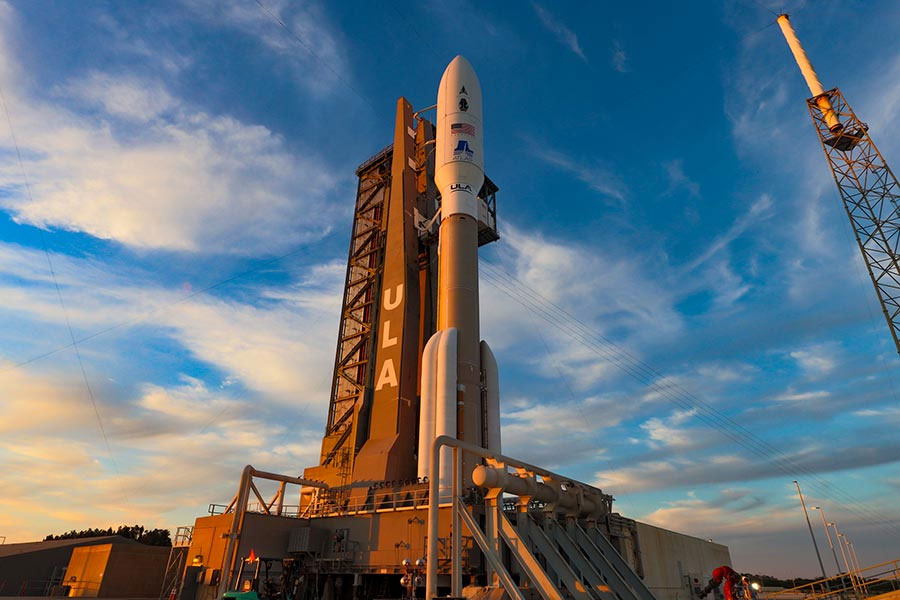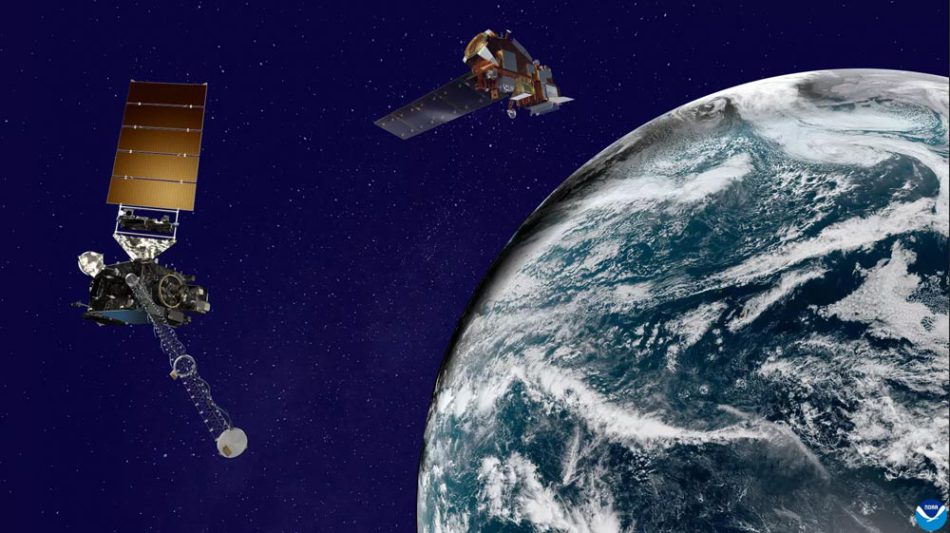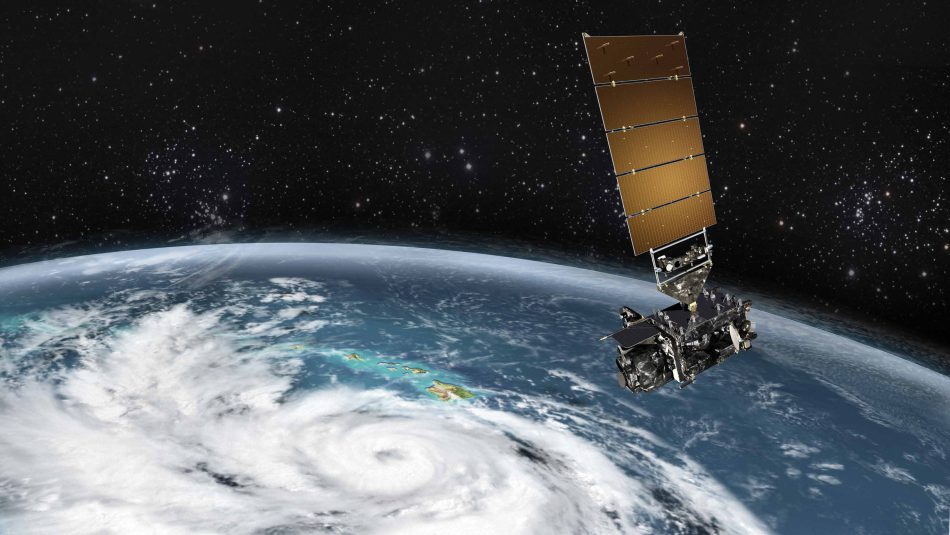National Oceanic and Atmospheric Administration (NOAA)
The National Oceanic and Atmospheric Administration (NOAA) is a US-based scientific and regulatory agency within the United States Department of Commerce, a United States federal government department. The agency is involved with forecasting weather, monitoring oceanic and atmospheric conditions, charting the seas, conducting deep sea exploration, and managing fishing and protection of marine mammals and endangered species in the U.S. exclusive economic zone.
NOAA currently owns and operates a total of nine satellites, categorized as follows:
- Four geostationary satellites: GOES-14, GOES-16, GOES-17, and GOES-18,
- Four polar-orbiting satellites: NOAA-18, NOAA-19, NOAA-20, and NOAA-21,
- One satellite designated for deep space operations: DSCOVR.



The mission of National Oceanic and Atmospheric Administration (NOAA) is to provide daily weather forecasts, severe storm warnings, climate monitoring to fisheries management, coastal restoration, and the supporting of marine commerce. NOAA’s products and services support economic vitality and affect more than one-third of America’s gross domestic product. NOAA’s dedicated scientists use cutting-edge research and high-tech instrumentation to provide citizens, planners, emergency managers and other decision makers with reliable information they need when they need it.
NOAA’s most advanced fleet of geostationary weather satellites is the latest generation in the Geostationary Operational Environmental Satellites (GOES) series, known as the GOES-R Series. Geostationary satellites orbit the Earth in a geosynchronous manner, meaning they move at a speed matching the Earth’s rotation, allowing them to remain fixed in the sky relative to a point on the ground. These GOES satellites provide continuous surveillance of the Western Hemisphere from an altitude of approximately 22,300 miles above Earth’s surface. Before launch, GOES satellites are designated with a letter, and once they reach geostationary orbit, they are renamed with a number.
The GOES-R Series comprises four satellites: GOES-R, GOES-S, GOES-T, and GOES-U. This program is a NOAA initiative, with support from NASA. The management of the GOES-R Series Program involves an integrated office jointly staffed by NOAA and NASA personnel. NASA’s Goddard Space Flight Center is responsible for overseeing the procurement of the GOES-R spacecraft and instruments, while NASA’s Kennedy Space Center manages the launch services. NOAA, on the other hand, manages the ground system, operates the satellites, and disseminates their data to users worldwide.
The GOES-R Series maintains the operational system used by previous GOES satellites, consisting of two satellites. However, the operational locations for the GOES-R Series satellites are situated at 75.2⁰ W and 137.2⁰ W, as opposed to the previous positions of 75⁰ W and 135⁰ W. This shift was made to prevent conflicts with other satellite systems. Additionally, NOAA maintains an on-orbit spare GOES satellite positioned at 105⁰ W to be deployed in the event of an anomaly or failure of either GOES East or GOES West.
| Satellite | Status | Launch Date | Launcher | Launch Provider |
| NOAA-1 (ITOS-A) | Decommissioned | Dec 11th, 1970 | Delta-N6 | Mc-Douglas USA |
| NOAA-2 (ITOS-D) | Decommissioned | Oct 15th, 1972 | Delta-300 | Mc-Douglas USA |
| NOAA-3 (ITOS-F) | Decommissioned | Nov 6th, 1973 | Delta-300 | Mc-Douglas USA |
| NOAA-4 (ITOS-G) | Decommissioned | Nov 15th, 1974 | Delta-2310 | Mc-Douglas USA |
| NOAA-5 (ITOS-H) | Decommissioned | Jul 29th, 1976 | Delta-2310 | Mc-Douglas USA |
| NOAA-6 (NOAA-A) | Decommissioned | Jun 27th, 1979 | Atlas-E Star | General Dynamics |
| NOAA-7 (NOAA-C) | Decommissioned | Jun 23rd, 1981 | Atlas-F Star | General Dynamics |
| NOAA-8 (NOAA-E) | Decommissioned | Mar 28th, 1983 | Atlas-E Star | General Dynamics |
| NOAA-9 (NOAA-F) | Decommissioned | Dec 12th, 1984 | Atlas-E Star | General Dynamics |
| NOAA-10 (NOAA-G) | Decommissioned | Sep 17th, 1986 | Atlas-E Star | General Dynamics |
| NOAA-11 (NOAA-H) | Decommissioned | Sep 24, 1988 | Atlas-E Star | General Dynamics |
| NOAA-12 (NOAA-D) | Decommissioned | May 14, 1991 | Atlas-E Star | General Dynamics |
| NOAA-13 (NOAA-I) | Decommissioned | Aug 9, 1993 | Atlas-E Star | General Dynamics |
| NOAA-14 (NOAA-J) | Decommissioned | Dec 30, 1994 | Atlas-E Star | General Dynamics |
| NOAA-15 (NOAA-K) | Decommissioned | May 13, 1998 | Titan-23G | Lockheed Martin |
| NOAA-16 (NOAA-L) | Decommissioned | Sep 21, 2000 | Titan-23G | Lockheed Martin |
| NOAA-17 (NOAA-M) | Decommissioned | Jun 24, 2002 | Titan-23G | Lockheed Martin |
| NOAA-18 (NOAA-N) | Active | May 20, 2005 | Delta II | ULA USA |
| NOAA-19 (NOAA-N Prime) | Active | Feb 6, 2009 | Delta II | ULA USA |
| NOAA-20 (JPSS-1) | Active | Nov 18, 2017 | Delta II | ULA USA |
| NOAA-21 (JPSS-2) | Active | Nov 10, 2022 | Atlas V | ULA USA |
| JPSS-3 | Planned | 2032 | TBD | TBD |
| JPSS-4 | Planned | 2027 | Falcon 9 | SpaceX USA |
| GOES-A (GOES-1) | Decommissioned | Oct 16, 1975 | Delta-2914 | Mc-Douglas USA |
| GOES-B (GOES-2) | Decommissioned | Jun 16, 1977 | Delta-2914 | Mc-Douglas USA |
| GOES-C (GOES-3) | Decommissioned | Jun 16, 1978 | Delta-2914 | Mc-Douglas USA |
| GOES-D (GOES-4) | Decommissioned | Sep 9, 1980 | Delta-3914 | Mc-Douglas USA |
| GOES-E (GOES-5) | Decommissioned | May 22, 1981 | Delta-3914 | Mc-Douglas USA |
| GOES-F (GOES-6) | Decommissioned | Apr 28, 1983 | Delta-3914 | Mc-Douglas USA |
| GOES-G | Failed | May 3, 1986 | Delta-3914 | Mc-Douglas USA |
| GOES-H (GOES-7) | Decommissioned | Feb 26, 1987 | Delta-3914 | Mc-Douglas USA |
| GOES-I (GOES-8) | Decommissioned | Apr 13, 1994 | Atlas I | General Dynamics |
| GOES-J (GOES-9) | Decommissioned | Dec 30, 1994 | Atlas I | General Dynamics |
| GOES-K (GOES-10) | Decommissioned | Apr 25, 1997 | Atlas I | General Dynamics |
| GOES-L (GOES-11) | Decommissioned | May 3, 2000 | Atlas IIA | General Dynamics |
| GOES-M (GOES-12) | Decommissioned | Jul 23, 2001 | Atlas IIA | General Dynamics |
| GOES-N (GOES-13) | Transferred in 2018 to USSF (EWS-G1) | May 24, 2006 | Delta IV | ULA USA |
| GOES-O (GOES-14) | On-orbit storage | Jun 27, 2009 | Delta IV | ULA USA |
| GOES-P (GOES-15) | Transferred in 2023 to USSF (EWS-G2) | Mar 4, 2010 | Delta IV | ULA USA |
| GOES-R (GOES-16) | In operation as GOES-East | Nov 19, 2016 | Atlas V | ULA USA |
| GOES-S (GOES-17) | Back-up for GOES-East & -West | Mar 1, 2018 | Atlas V | ULA USA |
| GOES-T (GOES-18) | In operation as GOES-West | Mar 1, 2022 | Atlas V | ULA USA |
| GOES-U (GOES-19) | Jun 25, 2024 | Falcon Heavy | SpaceX USA |
Company History
NOAA has a rich historical lineage, with roots in several federal agencies, some of which were among the oldest in the United States government:
- The United States Coast and Geodetic Survey, established in 1807.
- The Weather Bureau of the United States, founded in 1870.
- The Bureau of Commercial Fisheries, created in 1871, primarily for research fleet purposes.
- The Coast and Geodetic Survey Corps, formed in 1917.
The most direct precursor to NOAA was the Environmental Science Services Administration (ESSA), which absorbed several existing scientific agencies, including the United States Coast and Geodetic Survey, the Weather Bureau, and the uniformed Corps, in 1965.
The National Oceanic and Atmospheric Administration (NOAA) was officially established within the Department of Commerce through Reorganization Plan No. 4 and came into being on October 3rd, 1970. This move followed a proposal by President Richard Nixon, who envisioned a new agency to address national needs for “better protection of life and property from natural hazards…for a better understanding of the total environment…and for exploration and development leading to the intelligent use of our marine resources.” Interestingly, NOAA became part of the Department of Commerce rather than the Department of the Interior due to a disagreement between President Nixon and his Interior Secretary, Wally Hickel, regarding the Nixon Administration’s Vietnam War policy. This decision stemmed from Nixon’s dissatisfaction with Hickel’s letter urging him to listen to Vietnam War demonstrators, resulting in NOAA being placed under the Department of Commerce.
In 2007, NOAA commemorated its bicentennial, marking 200 years of service since its predecessor, the United States Survey of the Coast, was established.
As of 2021, NOAA boasted a workforce of 11,833 civilian employees, supported by 321 uniformed service members who comprise the NOAA Commissioned Corps.
All trademarks, logos and images mentioned and showed on this page are property of their respective owners.
Resources
www.noaa.gov
www.noaa.org
www.usa.gov
www.commerce.gov
www.goes-r.gov
www.wikipedia.org
www.eospso.nasa.gov
www.geodesy.noaa.gov
www.eumetsat.int
www.nasa.gov
www.weather.gov
www.spacex.com
www.ulalaunch.com
